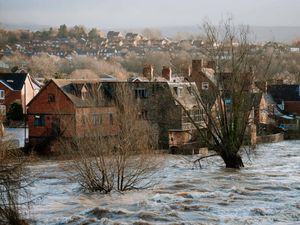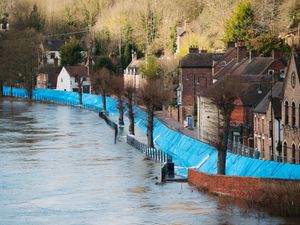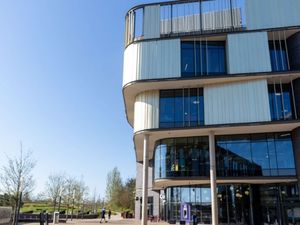Woodland planting planned in bid to stop Shropshire river flooding
Land bordering a Shropshire river will be used to plant new woodlands to stop flooding and improve water quality.

The Teme, which flows through Ludlow and Leintwardine on its way into Worcestershire, has been selected as part of the 'Woodlands for Water' Project.
The plan has come from the Environment Department (Defra), and has been welcomed by Ludlow MP Philip Dunne.
It comes after the Teme was selected by Severn Trent earlier this year as a one of two largescale projects to improve water quality – with ambitions to develop bathing quality water in the river.
The 'Woodlands for Water' plan aims to create 3,150 hectares – 7,780 acres – of woods along rivers and waterways in six catchments across the country by March 2025.
The plan has been backed by the National Trust, Woodland Trust, the Rivers Trust and Beaver Trust.
Under the proposals farmers and landowners will be able to apply for funding, providing greater financial incentives to plant trees, with the intention of reducing flooding, and improving water quality.
Planting trees or allowing them to grow naturally on and around river banks can block the run-off of pollutants into waterways, keeping them cleaner, and slow the flow of water to manage flood risks, officials said.
Ludlow, along with several other parts of Shropshire, was hit by significant flooding in early 2020, with both the Corve and the River Teme unable to cope with the amount of rainfall from Storm Dennis.
Mr Dunne said: "I am delighted that the River Teme is being proposed for nature recovery. This follows the agreement by the Water Services Regulation Authority (Ofwat) to significantly invest by Severn Trent Water in improving sewage facilities along the River Teme around Ludlow.
"I know many environmental groups and farmers are keen to work together to improve the condition of the river by keeping diffuse pollution and run-off from agriculture to a minimum."
Mr Dunne also said a separate study was set to show how other projects can help alleviate flooding in the area.
He said: "There has been a three-year project to slow the flow along the River Corve catchment with academic studies due to report soon which will help show the extent to which these measures can relieve flooding down stream in places like Ludlow."
Forestry minister Lord Goldsmith welcomed the new 'Woodlands for Water' project, saying: "This is a hugely exciting and untapped area for woodland creation.
"The benefits of planting trees by rivers are vast – from helping biodiversity recover by creating more natural riverbanks; to slowing the flow of surface water to reduce the risk of flooding; and improving water quality by buffering rivers from harmful agricultural pollution."
The project will be carried out by the 'riverscapes' partnership of experts from the environmental groups, who will provide expert assistance in the selected river catchment areas
Funding for the scheme is part of the England Trees Action Plan which aims to see more trees in the ground to support climate action, nature and people.
The Rivers Trust chief executive Mark Lloyd said: "By planting the right trees in the right places, we can tackle multiple problems and provide multiple benefits: more nature, less flooding, more carbon locked up in trees and soils, fewer droughts, less pollution, more wild places for people to enjoy.
"We hope that this project will be the pathfinder for a route map to the revival of rivers and their catchment areas that can benefit every corner of England, and the rest of the UK."
Planting will take place on the National Trust estate and five other catchment areas apart from the Teme, including Taw and Torridge in Devon and Somerset, Tamar and Fowey in Devon and Cornwall, Bure, Glaven, Stiffkey, Wensum, Heacham, Lark, Gaywood and Wissey catchment in Norfolk, Eden and Derwent in Cumbria, and the Wye and Usk in Gloucestershire and Herefordshire.
National Trust director of land and nature Harry Bowell said: "With 90 per cent of UK floodplains 'not fit for purpose' and creating flood issues for communities, we fully recognise the value of trees to our river corridors in helping to slow flood waters, soak up carbon and keep rivers cool in the face of rising temperatures.
"This work will enhance the projects we already have underway where our primary focus has been the conservation and health of the river channel itself."





